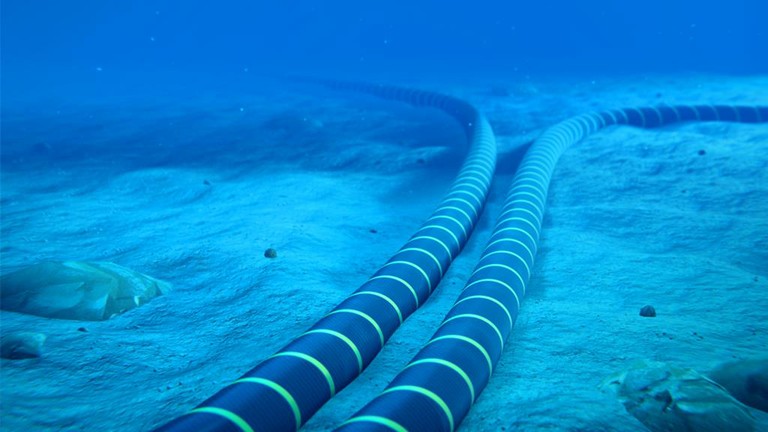Next-generation Subsea Infrastructure
- Overview
Undersea infrastructure refers to equipment and technology placed on or anchored to the ocean floor. This infrastructure includes cables for telecommunication, cables for power transmission, and other stationary equipment for scientific research.
The submarine cable industry has been installing infrastructure on the seafloor since the first submarine telegraph line was laid between England and France in 1851. There are two main types of cables: those used for telecommunications and those used to transmit energy. Submarine telecommunications cables carry 97% to 99% of international communications from the United States.
In the future, offshore wind facility developments will require connections to shore via one or more cables, depending on the size and location of the facility. Cable interconnections between individual wind turbines and one or more electric service platforms will also be made within the footprint of the wind facility.
- Next-generation Subsea Infrastructure
Next-generation subsea infrastructure refers to advanced underwater technology and equipment designed to significantly improve the capacity, reliability, and efficiency of subsea operations, often incorporating features like high-bandwidth communication cables, autonomous underwater vehicles, advanced data management systems, and improved energy production capabilities, allowing for more efficient and extensive underwater operations, particularly in areas like oil and gas extraction, telecommunications, and scientific research.
A prime example is Meta's "Project Waterworth" which aims to build a large-scale, high-capacity subsea cable network spanning multiple continents to enhance global connectivity.
Key features of next-generation subsea infrastructure:
- Increased bandwidth: Subsea cables with significantly higher data transmission capacity to meet growing demands for internet traffic.
- Advanced automation: Utilizing autonomous underwater vehicles (AUVs) for inspection, maintenance, and data collection, minimizing human intervention.
- Integrated monitoring systems: Real-time monitoring of subsea infrastructure health and performance using sophisticated sensors and data analytics.
- Electrification: Switching from hydraulic power to electric systems for improved efficiency and reduced environmental impact.
- Modular design: Flexible subsea systems that can be easily adapted to different field conditions and future upgrades.
<More to come ..>


